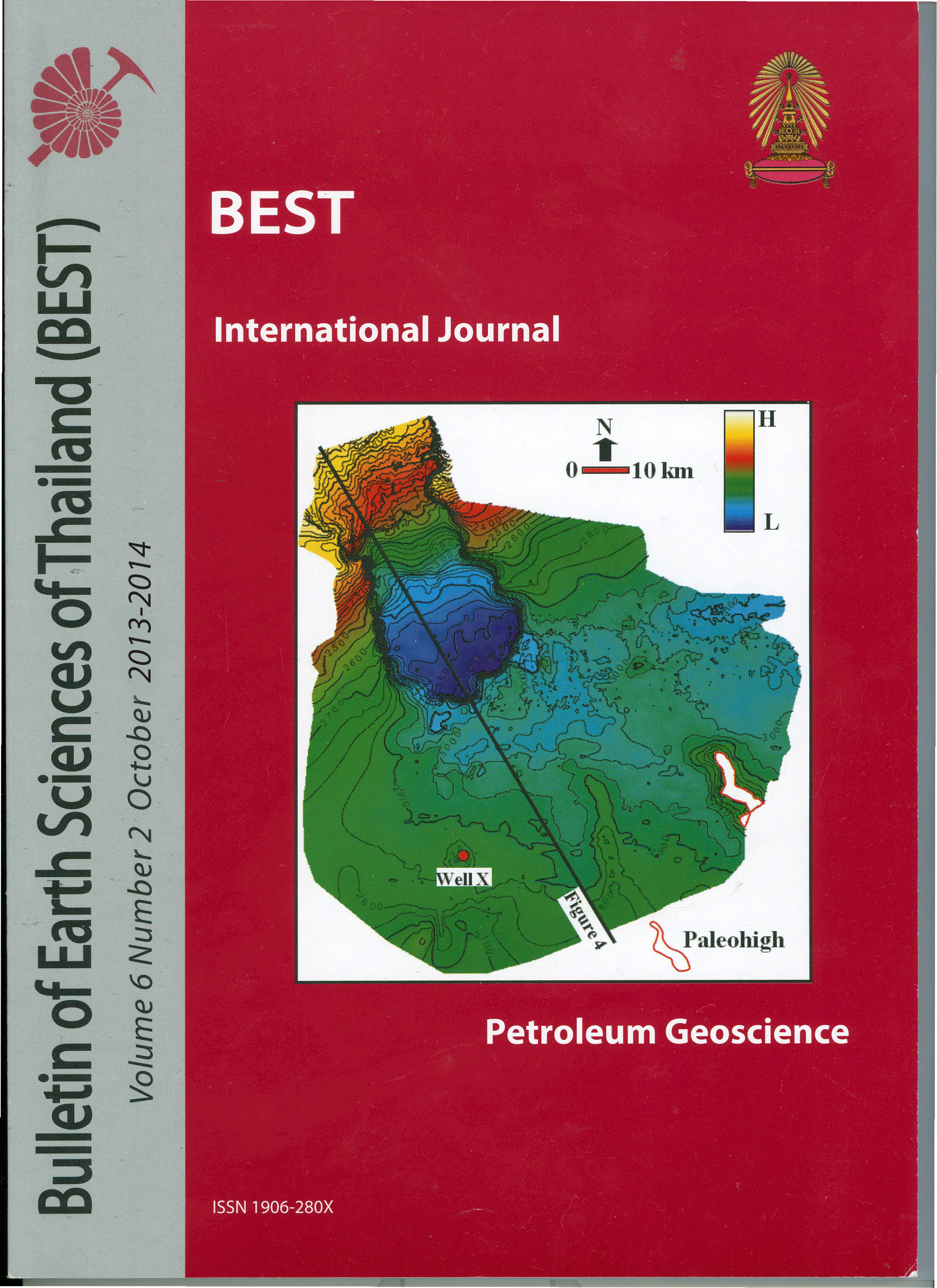Controls on Reservoir Geometry and Distribution, Tantawan Field, Gulf of Thailand
Main Article Content
Abstract
Integration of well log and seismic analysis in a study area in the Tantawan field, Gulf of Thailand shows that sand architecture, connectivity and distribution can be influenced by local structural setting. The depositional systems in the study area were discriminated into two main types based on their different sand geometries, and distributions resulting from changes in local fault movement during deposition. Sands in the upper sand system were interpreted as a vertically stacked shoestring sand complex deposited by a laterally constrained river system whereas in the lower sand system two broad sands were interpreted to be complex stacked meander belt sands in a low gradient drainage system. Partial fault activity was recognized only during deposition of the upper sand system with thickened section between interpreted Markers 2 and 5 on the down-thrown side of faults and in the central graben. Fault movement increased accommodation space and sands stacked vertically inter-bedded with sealing shales. Net to gross is lower and fault seal potential enhanced providing traps for hydrocarbon accumulations. In comparison, accommodation space was limited during deposition of the lower sand system. Stacked sand bodies are thicker and fault seal potential is decreased. Water-bearing sands are more common in this interval. Based on this analysis, local fault activity provides a potential environment for fining upward depositional systems which provide zones of enhanced hydrocarbon trapping potential in the complexly faulted structures within the Pattani Basin.
Article Details

This work is licensed under a Creative Commons Attribution-NonCommercial-NoDerivatives 4.0 International License.
Copyright © 2008 Department of Geology, Faculty of Science, Chulalongkorn University. Parts of an article can be photocopied or reproduced without prior written permission from the author(s), but due acknowledgments should be stated or cited accordingly.
References
Crossley, A.R., 1990, The Geology and hydrocarbon potential of the Pattani basin. Gulf of Thailand, unpublished research, Unocal Thailand.
Emery, D., K. Myers, and G. T. Bertram, 1996, Sequence Stratigraphy, Wiley, p 111-133.
Jardine, E., 1997, Dual petroleum systems governing the prolific Pattani Basin, offshore Thailand. Petroleum systems of S.E. Asia and Australasia Conference, Jakarta, May 21-23, 1997, p. 351-363.


